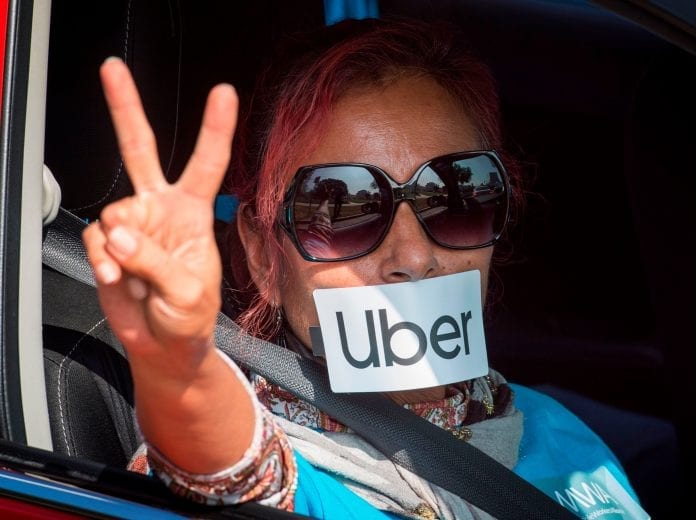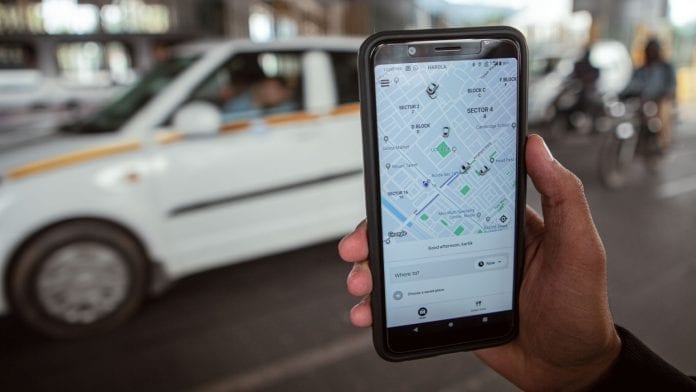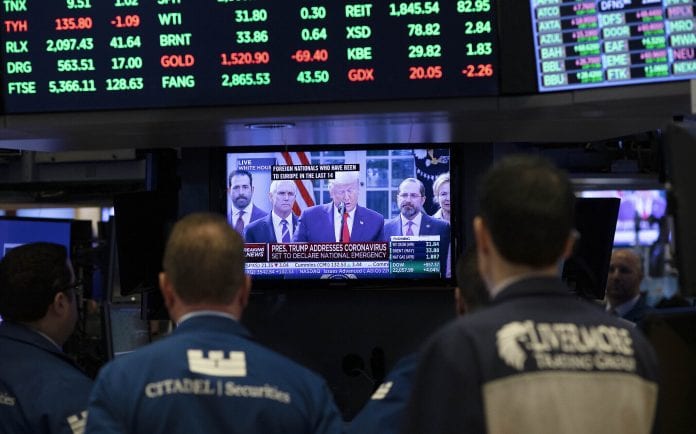Stock markets offer the best valuation of a company in the open market. It is determined through an auction process that involves willing buyers and sellers. The price of the share is based on internal and external economic factors. The company is listed as one of the S&P 500, and its share price is affected in the same way.
However, there are instances where the price of some stocks stagnates or reduce in smaller proportions with the decline in economic forecasts. In such scenarios, the upward push is driven by the demand for the product or service. The valuation of the currency in the home security exchange and the market structures also affect the pricing of the shares.

The coronavirus pandemic has changed the use of uber from a need to a necessity. More customers prefer using the ride-hailing application as it limits the number of people in transit. The increase in share value would have been exponential were it not for other players in the sector. However, being the market leader, a significant portion is registered compared to the competition.
At the end of each trading day at the London stock market, there will be a change in stock value, but not as rapid as others. The balance sheet will register positive marginal valuation until this COVID-19 pandemic stabilizes. This is attributed to two factors:-
- The behavior of the NYSE uber stocks in the United States – any change in the demand for the shares will affect its valuation globally. This relationship will translate into any market the application is being used. This can be further interpreted in conjunction with the 2019 Uber IPO.
- Valuation of the Dollar against the British Pound – the US Dollar is gaining value against the British Pound. As the world reserve currency, its demand over other currencies is high, thus affecting the balance of trade on the global market.
The History of Uber Technologies

The rise of Uber as a transport alternative and a market leader was fuelled by the demand factor. Before its launch in 2011, passengers used to book taxis. Basing on the logistical factors, the passengers had to know where and how to get the services. The expansion of the taxi business was limited to networks, need, and charges. The demand was high, which translated into more charges.
Uber cabs (as it was formally known) developed an application that would connect drivers to passengers via the internet and maps. The service was available to anyone who had the application. Customer volumes grew, the charge per journey reduced, and the long term strategic forecast could be estimated. As one of the pioneers in this field, it broke the glass ceiling for more ride applications. Its timeliness, efficiency, and convenience attracted investors who are instrumental to its growth today.
The listing of Uber in quarter 1 of 2019 is a historical one, thanks to its 11% drop in uber shares value on day-one trading. Market capitalization mishaps and share valuation were taunted as the cause. However, the service, expansion model, and growth trajectories remained intact. This did not stop Uber’s innovation, product customization, and market dominance.
Over the years, Uber has grown to assimilate both high end and cheaper rides. They also have self-riding services, car-sharing, and food delivery services. It also has interests in transport networking and other assorted logistic services. From UberBLACK to UberX, the application has a presence in over 63 countries globally, the United Kingdom taking center stage in Europe.
Uber has helped solve the transportation problem both in social and professional circles. The market data shows significant use in social endeavors, among them:-
- Household errands – the movement to and from market places.
- Social outing – popular for people who go out to party.
- Order-ins – Uber Eats has grown popular for food deliveries.
The above services are needed now more than ever. The quarantine order by the British government makes uber a preferred mode of transport.

Professionally, Uber has improved logistics in the following ways:-
- Deliveries – the movement of people, goods, and services are now possible at a lower cost.
- Corporate Car Service – use of high-end cars for executives, billed peruse.
It saves the company maintenance cost associated with the purchase and servicing of company cars. Other human resource setbacks, such as sick leave for the company driver, does not arise.
Commercial Challenges Facing Uber
- Economic shocks – this can be analyzed in two ways; internal and external. Internally, the business is suffering consumer volumes, thanks to the coronavirus outbreak. It might be doing well compared to other sectors, but overall, the revenue stream is affected. Externally, there is less activity on the securities exchange. This forces the government to shut down share trading to cushion the business from losses. For more information, visit everfx.com.
- Competition – more taxi applications have sprung up in the recent decade, offering the same service. From Bolt (formerly Taxify), Gett, Kapten, Kabee, MyTaxi to Addison Lee, these companies have mastered the art of demand. They have classified the market, identified their customer base, and created their niche in the market.
- Congestion – taxi-hailing services have been criticized for the increase in the number of vehicles in the city. The number of passengers they carry compared to the space they occupy on the roads has forced local authorities to institute taxes. These taxes are meant to make those who need the service and can afford it, to use it.
- The 2019 IPO – the public sale of Uber shares in the New York Stock Exchange has greatly reduced the value of the company. This has affected its global business and subsidiary. The losses are still posted today.









